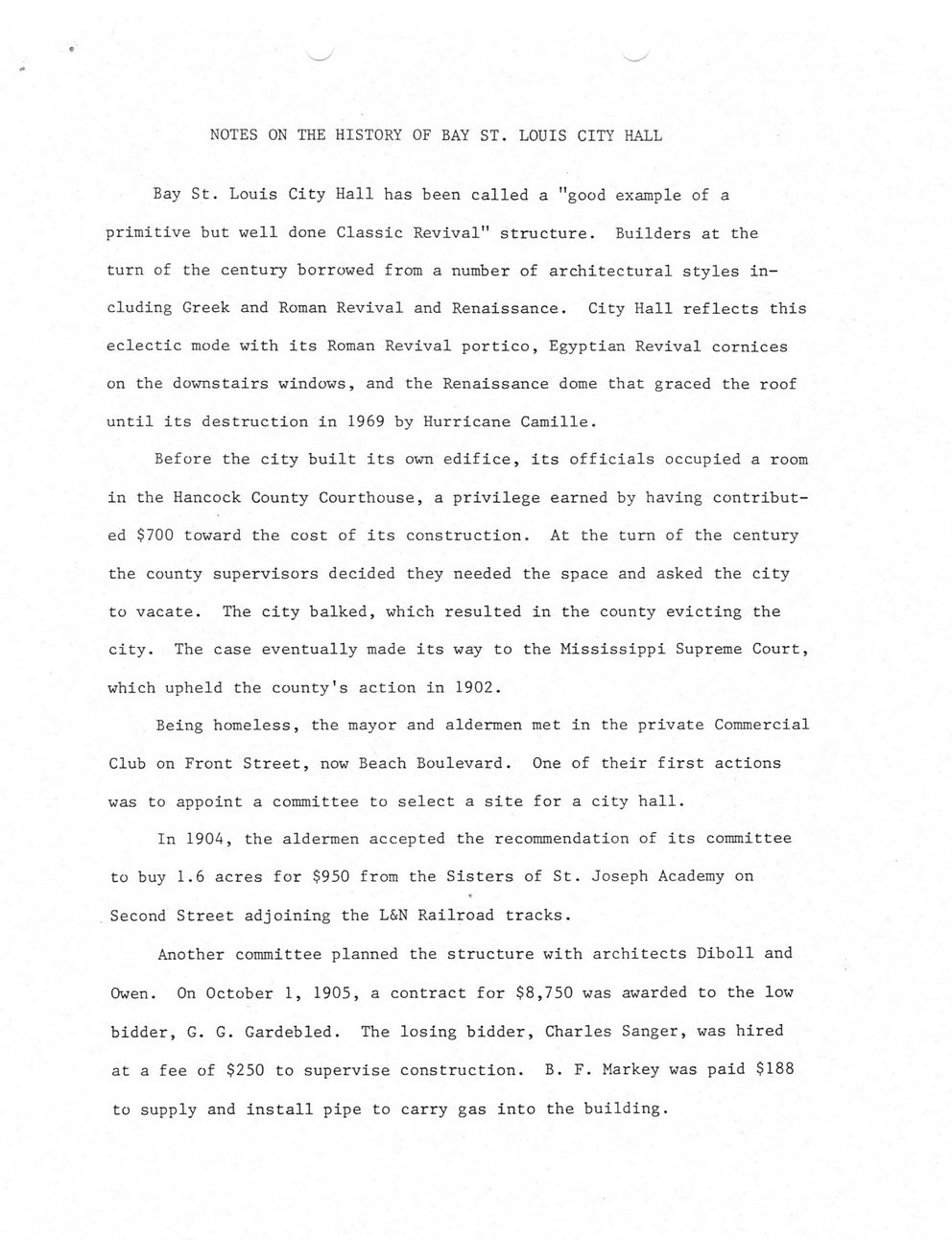This text was obtained via automated optical character recognition.
It has not been edited and may therefore contain several errors.
NOTES ON THE HISTORY OF BAY ST. LOUIS CITY HALL Bay St. Louis City Hall has been called a "good example of a primitive but well done Classic Revival" structure. Builders at the turn of the century borrowed from a number of architectural styles including Greek and Roman Revival and Renaissance. City Hall reflects this eclectic mode with its Roman Revival portico, Egyptian Revival cornices on the downstairs windows, and the Renaissance dome that graced the roof until its destruction in 1969 by Hurricane Camille. Before the city built its own edifice, its officials occupied a room in the Hancock County Courthouse, a privilege earned by having contributed $700 toward the cost of its construction. At the turn of the century the county supervisors decided they needed the space and asked the city to vacate. The city balked, which resulted in the county evicting the city. The case eventually made its way to the Mississippi Supreme Court, which upheld the county's action in 1902. Being homeless, the mayor and aldermen met in the private Commercial Club on Front Street, now Beach Boulevard. One of their first actions was to appoint a committee to select a site for a city hall. In 1904, the aldermen accepted the recommendation of its committee to buy 1.6 acres for $950 from the Sisters of St. Joseph Academy on Second Street adjoining the L&N Railroad tracks. Another committee planned the structure with architects Diboll and Owen. On October 1, 1905, a contract for $8,750 was awarded to the low bidder, G. G. Gardebled. The losing bidder, Charles Sanger, was hired at a fee of $250 to supervise construction. B. F. Markey was paid $188 to supply and install pipe to carry gas into the building.

BSL 1880 To 1899 Notes-on-History-of-BSL-City-Hall-P1